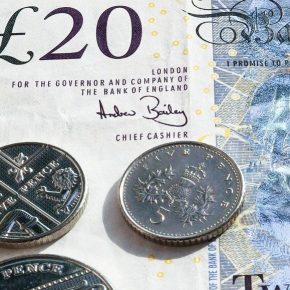
Innovations in Public Lighting: How LED is Changing the Game
Public lighting plays a crucial role in enhancing the safety and security of urban areas. They improve the quality of life of people living in urban areas by illuminating public spaces and enabling people to access them even at night.
One of the most common changes in public lighting is the gradual shift towards LED lights. The use of LED lights in public lighting design has numerous benefits. This article discusses how LED is a game changer in public lighting and why urban spaces are embracing LED technology for public lighting…
Benefits of LED in Public Lighting
The light-emitting diode, or LED, produces light through electroluminescence. In this process, a voltage is applied to a semi-conductor within the LED that produces light. Today, LED is widely used to illuminate streets, pathways, and public spaces.
Switching to LED lights is a step through which institutions can create safer public spaces while contributing towards environmental sustainability. Moreover, another benefit of LED lights is that they are a major contributor to lower energy bills.

There are many more benefits of LED lights, as listed here…
They are Energy Efficient
Energy efficiency refers to the amount of light a bulb emits per watt of electricity consumed. LED lights are 80-90 per cent more energy efficient than traditional lights. This means that LED lights are able to convert 80 per cent of the electricity into light while only 20 per cent is converted into other forms of energy, such as heat.
They Provide Longevity
Longevity is another crucial benefit of LED lights. An LED light lasts up to three to four years more than a CFL light and thirty years more than an incandescent light. Moreover, even if you leave your LED light on for 8 hours a day, it can last up to twenty years, making it a great choice for public lighting.
They are Ecologically Friendly
LED lights don’t contain toxins such as mercury that are present in CFLs. Moreover, LED lights are 100% recyclable and provide greater longevity, reducing an institution’s carbon footprint and helping it take a step towards an environmentally sustainable future.
They Emit Low UV and Heat
LED lights emit most of their energy in the form of visible light and hardly any light in the spectrum of UV rays. Moreover, LED lights don’t emit much heat, making them a safer option for heat-sensitive areas.
Suitable for Extreme Climate Conditions
LED lights are suitable for places with extreme weather conditions. A downside of CFL lights is that they can’t function to their optimal capacity in areas that are extremely cold. However, this is not the case with LED. These illuminations work perfectly in areas with extreme weather conditions.
They Work Efficiently on Low Voltage
Traditional lighting designs require a high-voltage power supply. On the other hand, an LED light works perfectly even on a low voltage, making it a superior option for lighting outdoor public spaces.
They Effectively Disperse Light
Unlike conventional lighting, which emits light in all directions, LED emits light in a specific direction, thanks to its design and use of reflectors. This feature helps in more focused illumination and enhances the efficiency of light distribution.
Conclusion
There is no denying that LED is a superior option to conventional lighting designs for public spaces. However, efficient installation also plays a crucial role in this process. Therefore, it is advisable to avail of the services of an experienced electricity contractor to enjoy the maximum benefits of an LED lighting system.
Latest news

26th July 2024
Enfield Speciality Doors completes world-class project for Atlas Copco HQ
A rundown office and warehouse building completely transformed into a modern headquarters for Atlas Copco has been fitted with more than 120 internal fire doors from Enfield Speciality Doors.
Posted in Access Control & Door Entry Systems, Articles, Building Industry News, Building Products & Structures, Building Systems, Case Studies, Doors, Interior Design & Construction, Interiors, Posts, Restoration & Refurbishment, Retrofit & Renovation, Security and Fire Protection, Sustainability & Energy Efficiency, Timber Buildings and Timber Products, Wooden products
26th July 2024
Abloy UK launches new white paper
Abloy UK, a leading provider of security and access control solutions, has launched a new white paper.
Posted in Access Control & Door Entry Systems, Architectural Ironmongery, Articles, Building Industry News, Building Products & Structures, Building Services, Doors, Facility Management & Building Services, Health & Safety, Information Technology, Innovations & New Products, Publications, Research & Materials Testing, Security and Fire Protection
26th July 2024
MCRMA Member Profile: David Roy, Director of Roofconsult
David Roy of MCRMA member company Roofconsult has more than 50 years’ experience to draw upon working in the building envelope sector and a unique perspective on how it has changed in that time.
Posted in Articles, BIM, Infrastructure & CAD Software, Building Associations & Institutes, Building Industry News, Building Products & Structures, Building Services, Building Systems, Cladding, Information Technology, Restoration & Refurbishment, Retrofit & Renovation, Roofs, Walls
26th July 2024
Strand: Enhancing Door Functionality and Safety
Craig Fox, Sales Director for Strand Hardware, outlines how door industry professionals might apply door limiting stays…
Posted in Architectural Ironmongery, Articles, Building Industry News, Building Products & Structures, Building Services, Doors, Facility Management & Building Services, Health & Safety, Restoration & Refurbishment, Retrofit & Renovation
 Sign up:
Sign up: